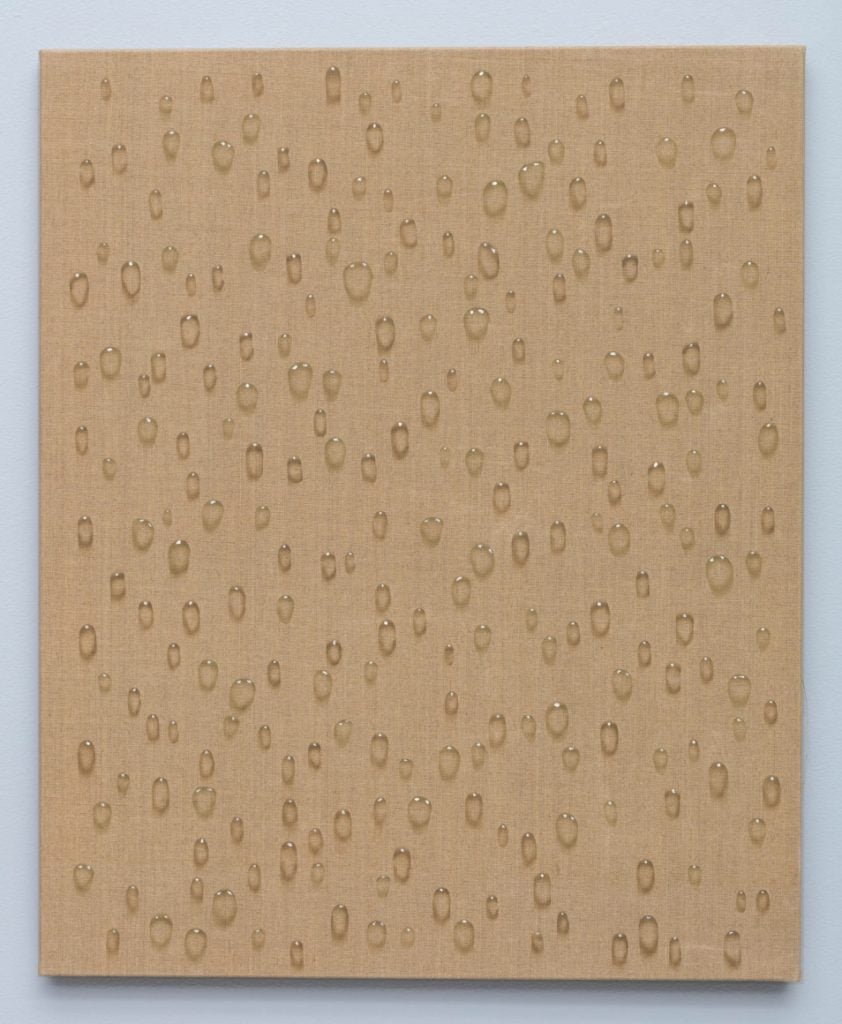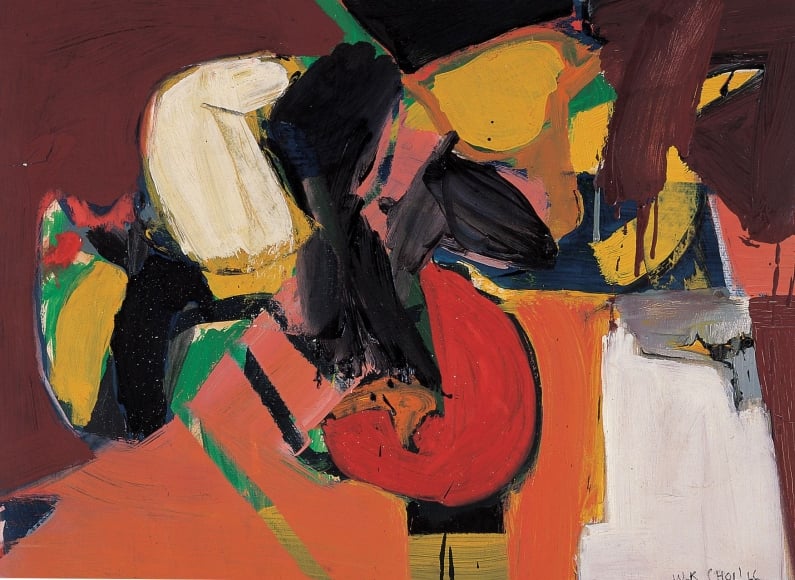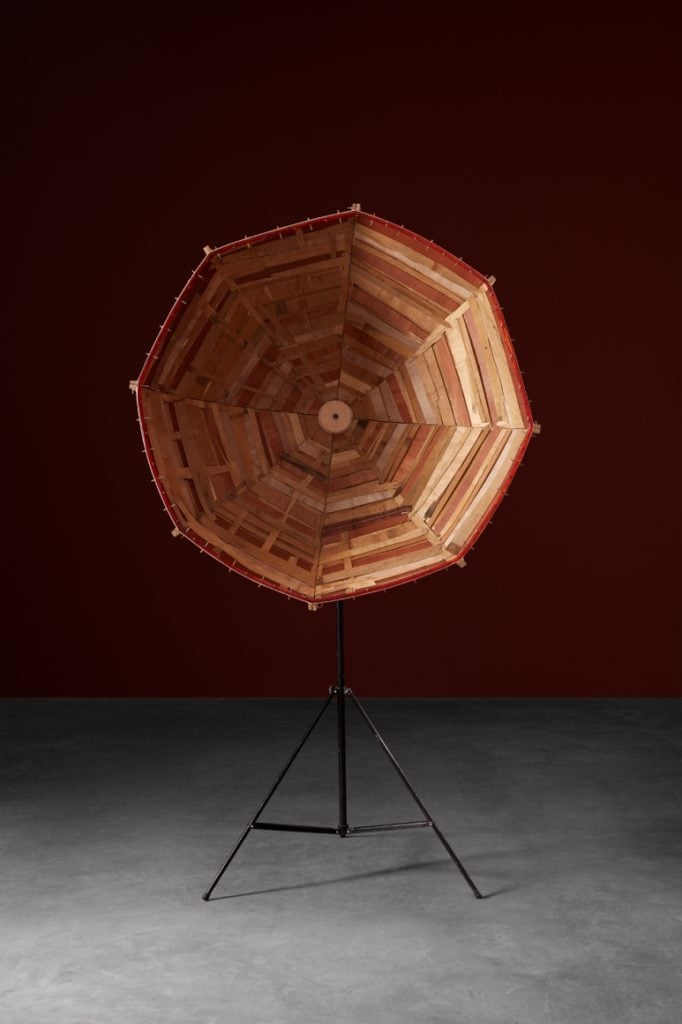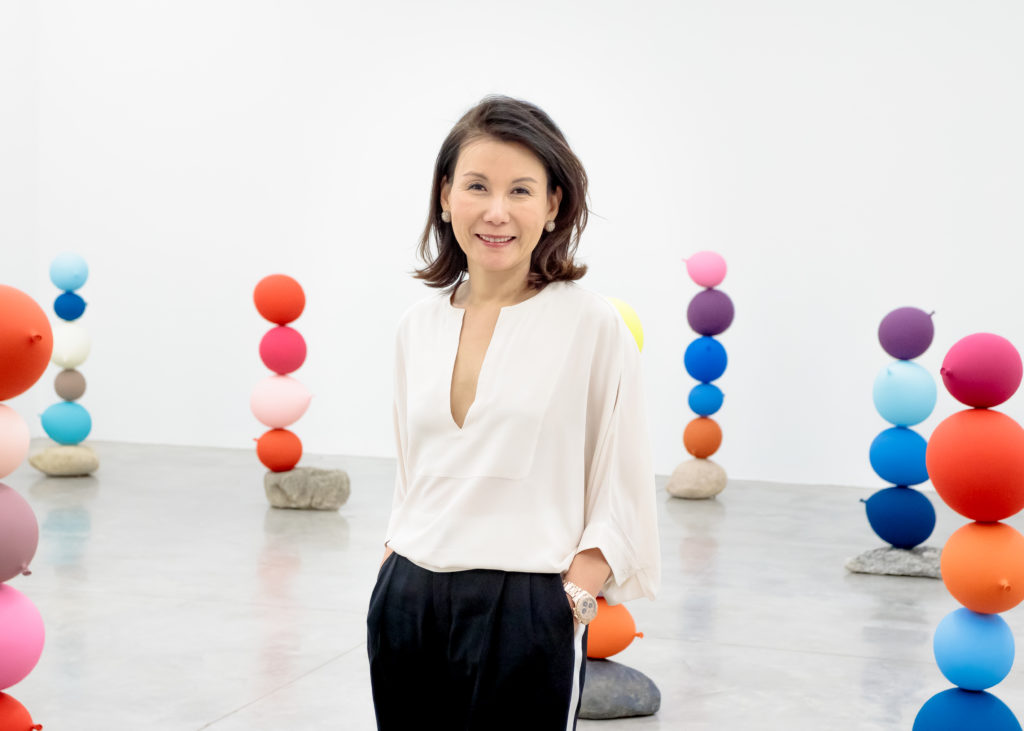The art dealer Tina Kim opened her Chelsea gallery in 2001 with a mission to provide exposure to lesser-known international artists, particularly those from her native Korea.
Over the years, Kim has established her space as a go-to destination for Korean contemporary and historical art, which she showcases through illuminating exhibitions that bring to life the country’s storied cultural history. Earlier this fall, for example, Kim organized a well-attended show of work by Suh Seung-Won, an unsung painter who helped to pioneer the Modernist movement in Korea by encouraging his contemporaries to look inward and draw inspiration from their own traditions instead of turning to the Western art world for guidance. In addition, Kim has also given a platform to important emerging and renowned women artists, such as Minouk Lim, Wook-Kyung Choi, and Suki Seokyeong Kang.
After a whirlwind year in the art world where much of the conversation centered around the need to provide more exposure to women artists from around the globe, Artnet News sat down with Kim to discuss her thoughts on everything that transpired this year, and how she feels artists will fare in 2020.
What were the big art-world trends in 2019? And do you see those same trends carrying over into the new year?
There was certainly interest in revisiting the history of female artists, particularly 1960s American artists in California and across the country. There were a lot of exciting shows that I saw within that vein.
I think in 2020 there will be a more international approach. I am personally interested in learning more about which Asian American artists were missed in the history of art. I think that’ll probably be the next big thing in New York. I am especially curious about the generation of artists who arrived here in the ’60s. A lot of them received Rockefeller grants, like the artist I’m showing now, Kim Tschang-Yeul.
Through that research, I learned what an important role those grants played in inviting international artists, particularly Asians, to show in New York. The grant allowed them to meet other artists, take courses at the Art Students League, and travel throughout America. I’m learning that there were a number of strong female artists who were invited, and I’m looking into that more. I have been bouncing ideas off of different curators.
Looking ahead to exhibitions on the docket for 2020, what are you most excited about?
I am looking forward to the the first Asian Art Triennial, which is being organized by the Asia Society. It will open here in New York in June. There has never been anything quite like it, so I’m very excited.
At the Mori Art Museum in Japan, they are organizing a historical exhibition of living female artists who were born before 1940. There are many institutions internationally who are interested in looking at female artists from that generation. For instance, the Pompidou is organizing an all-female abstract-painting exhibition. There is certainly going to be a lot of rediscovery next year!

Kim Tschang-Yeul, Water drops (1973). Image courtesy Tina Kim Gallery.
And how do you see that playing out in the market over the next year?
I think it’ll inspire art dealers to become more curious about those artists. It might take some time for the market to have the confidence to really acquire their work, but the institutions who are supporting these broader exhibitions will certainly help to bolster that confidence. In terms of the quality of work, there is no question that a lot of these artists’ work is undervalued. Frankly, it speaks for itself.
Artists don’t have to be young to be cool. You can look at certain periods and investigate—there is so much that we’ve missed. Back in the ’60s, the opportunities were very limited, especially if you were not a male Caucasian artist. There were only a few galleries and a few museums. There’s so much that wasn’t shown. The collectors who have sophisticated taste and the knowledge will recognize that, so I think it’s really only a matter of time before it catches up to the market.
Do you see any resistance to rediscovering older artists from collectors? Are people still trophy-hunting for the big names or do you think that’s starting to shift?
I think it’s definitely shifting. Some younger artists’ works are overpriced. There’s huge speculation, and that market, in my opinion, is not safe. That’s especially true when compared to some of the historical artists who had long, strong careers, even though their bodies of work have never been on the market before. Their prices compared to these younger artists who are getting so much hype now? I don’t need to tell any experienced collector which one is a better purchase. One will stay in the art history books, the other will maybe not exist in five years. You see it happen all the time: prices escalate, they get locked in at a point where the trade stops, and then people don’t remember the artist.
I think it’s risky to push a young artist’s price so early on. Even when they’re not so young, in their 40s or 50s, they still have 40-plus more years of their career. How can you continue to push an artist’s price so high for the next 40 years? How much growth will you actually see? How is that sustainable?
What can we expect from your gallery’s program next year?
Two female artists I am concentrating on at the moment are Minouk Lim and Wook-Kyung Choi.
Minouk Lim, who is from Korea, has already had a major exhibition at the Walker Art Center [in Minneapolis], and has been shown at many international venues, but she’s still building her career here. She had a very fruitful residency at the Rauschenberg Residency down in Florida. Since she started making those works in America, it makes sense to show them for the first time here.
Wook-Kyung Choi, who is also Korean, came to America in the ’60s. She was at the Cranbook Academy in Michigan. And she lived here, too. She had a residency at the Brooklyn Museum. I can’t imagine how strong she had to be and how much will was required on her part to stay in America and make it work here. She suffered from depression and her career was very short. She passed away in the ’80s.

Wook-Kyung Choi, Untitled (1966). Image courtesy Tina Kim Gallery.
While in New York, she experimented with different mediums, specifically black-and-white ink works on paper and beautiful abstract paintings. Everything she did is really striking—you see it and you’re drawn to it. Whenever I show her work, people say it looks very much like Lee Krasner and de Kooning. But that’s not fair—you have to look at the influences that were going both ways, because many American artists at the time were fascinated by Asian culture. If you look at Jackson Pollock’s drip paintings, you can see they were strongly influenced by calligraphy.
Do you think the museums will continue to broaden our view of the art world beyond the accepted Western canon?
It’s a really exciting moment. Many institutions are really revisiting their collections and making them broader. They feel the urgency to change so that it’s not such a dominant New York- and European-centric view but more a global one. You cannot expect everything to be centered around New York. A lot of things happened in Asia. And even if the center was New York, those artists who were here were looking abroad for inspiration.
Artnet News recently published a series of articles about where women in the art world truly stand today, and what we noticed is that the growth of women artists’ share of the art market and representation in museums is not as great as we might have thought. Do you think we’re making enough progress, and do you see anything that’s holding us back from achieving gender equality more quickly?
I definitely see that there’s far fewer female artists represented in museums’ overall collections. Many museums see the urgency to collect female artists now. But not only should they be thinking about adding work by female artists, they need to collect in depth and build out their scholarship. They can’t collect just one work by this female artist, or one work by that female artist and say, “We have five female artists’ work.” That won’t do. Placing one or two works in a museum is not really going to help an artist’s career. It needs to be more than just a surface-level effort.
Everybody is aware that change needs to happen, but you cannot force a curator to work on something that they didn’t study. For those who are already working at the big institutions, this may not be their specialty. They will do what they can, but how much is that, at the end of the day? You cannot force change—it requires time.
The curators who are in school now have a more genuine understanding of these issues. They see an opening to do research papers or their PhDs on some of these subjects, which haven’t really been covered. And when those young curators come into their positions at the museums, I think change will happen. There are so many talented young curators who are working today. We have a bright future.

Minouk Lim, Parabolic Satellite (2015). Photo courtesy Tina Kim Gallery.
Is equal representation of women something you think about a lot in your own gallery?
For me, when I’m working with an artist, I never think about them as female or male. Gender is never really a question for me. And maybe that’s an advantage that a female gallerist has. Maybe it just comes more naturally. I don’t know why that is.
I sometimes think, “Wow, I work with a lot of women artists,” but it was never a specific intention to do so. When you don’t have that kind of prejudgment and you just see, the balance is more natural. That’s just what I believe.









